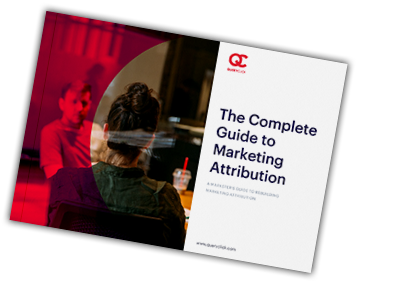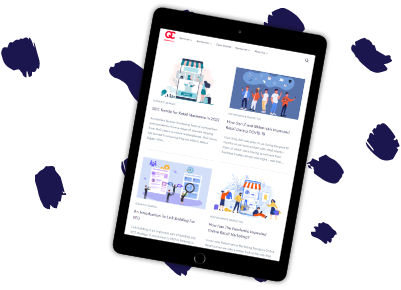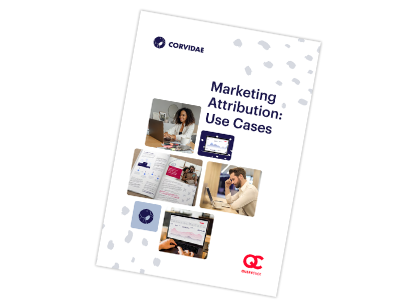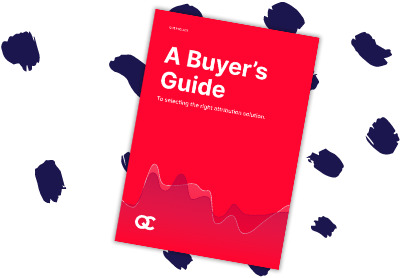Marketing Attribution
Everything you need to know about marketing attribution – and an introduction to our unique attribution solution, Corvidae.

Page Content
What is marketing attribution?
Marketing attribution is the practice of identifying and evaluating marketing touchpoints that a customer encounters on their buying journey.
A relative value is then placed on each touchpoint to determine the greatest impact on conversion.
Related: A Beginner’s Guide to Marketing Attribution
A quick history of marketing attribution: where it’s been, where it’s at and where it’s going…
Media Mix Modelling
Media Mix Models (MMMs) go as far back as the 1950s. But rose to popularity in the 1980s.
However, their popularity purely came down to the lack of alternatives available to marketers at the time.
Many marketers still use MMMs for top-level media planning and budgeting. Mostly because they haven’t yet made the transition to more modern ways of understanding their marketing mix.
Multi-Touch Attribution
With MMMs failing digital marketers, new models were created including Last-Click attribution.
Multi-touch models filled gaps left by MMMs such as the ability to measure in much greater detail. Therefore, enabling marketers to see more granular analysis of what’s working, such as targeting strategies, creative and time of day.
However, these methods fail to capture the value of many other factors that may have contributed to the desired behaviour. Or, understand if that behaviour might have happened in the absence of the advertisement “touch.”
Machine Learning and AI-Driven Attribution
It’s become clear that existing solutions fail to capture the entire customer journey. But Machine Leaning and AI processes are paving the way for a new era of attribution.
Standard models rely on cookies and IDs to track touchpoints. However, ML and AI-led approaches (which we use for our attribution solution, Corvidae) allow for the rebuilding the raw, cross-channel analytics data to see a complete customer journey.
If you’re new to the world of attribution, check out our attribution glossary to learn some of the key terms you need to know.
What are attribution models?
Attribution models work to analyse which touchpoints, or marketing channels, should be credited for a conversion. However, the amount of credit an interaction gets varies depending on the type of model used.
Understanding your customer journey While there isn’t necessarily a “best” attribution model, understanding your customer journey will help you understand which best suits your business.
Types of attribution models
Here is a quick rundown on some of the most widely used models:
Marketing attribution model example
For most marketers, identifying potential customers earlier in the buying journey is easier said than done.
To do this effectively, you need access to accurate attribution data that proves the value and contribution of every touchpoint in a conversion journey.
This can be a challenge when most off-the-shelf attribution solutions rely on flawed attribution models like last-click.
By attributing 100% of conversion revenue to a user’s last touchpoint, last-click solutions fail to account for the complex and multi-faceted nature of most users’ true conversion journeys.
For example, while GA360 may show you that a user came to your website directly, a realistic view of their journey may look something more like this:
- A user clicked through on one of your Display ads they saw while reading their favourite blog.
- After visiting your website once, they might have clicked on a remarketing ad on Facebook.
- Now that they’re aware of your product or service, they use Google to weigh up their options with other companies that provide the same thing.
- After doing their research, the user decides you have the best service proposition and re-visits your website to convert.
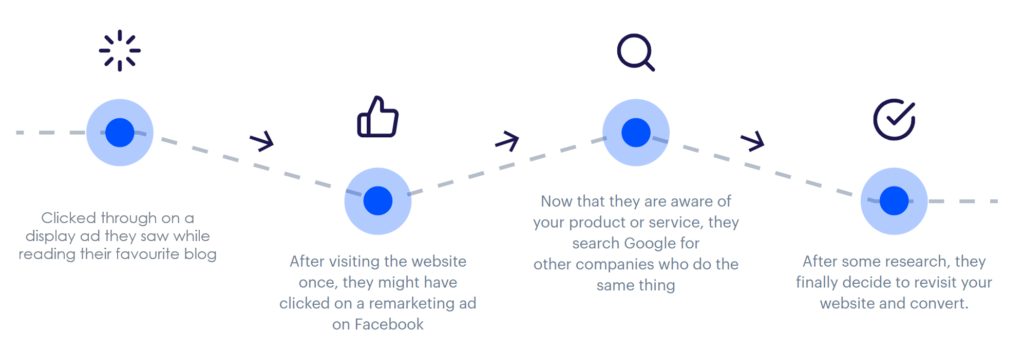
Despite the important role that Display and Paid Social played in the journey to that conversion, last-click gives them none of the credit.
With limited views like this from their attribution solutions, marketers are left spending more of their budget on oversaturated, lower-funnel markets when the real opportunity lies further up the funnel.
Related: Why You’re Seeing Too Much Direct Traffic in Your Analytics Reports (And How to Solve It)
Why is attribution important?
When done properly, marketing attribution allows marketers to create a single, unified data view.
This view allows them to re-assess their marketing mix and make adjustments to marketing spend to drive true marketing ROI.
Furthermore, marketing budgets are being slashed left, right and centre. But marketers are still expected to produce results with far less resources at their disposal.
Accurate attribution places the power to make the right budget decisions back into their hands.
4 signs you need a new attribution solution
1. You struggle to justify your marketing budget and spending decisions
Marketing spend decisions are under greater levels of scrutiny than ever before. And the pressure to connect marketing investment to growth and revenue is non-negotiable.
However, marketers using ineffective attribution models lack accurate data to prove the effectiveness of marketing activity. Therefore, they can’t push back on unwarranted intrusions on the budgeting and planning process. Including protecting and ringfencing their budgets, for example.
As well as this, our own research found that the nature of spend is being impacted too. With evidence that 67.5% of Marketing Directors are actively restricted from employing activity with longer term payback due to internal stakeholder influence.

2. You lack confidence in your marketing analytics data
Secondly, you simply might not trust your marketing data.
This is a very real challenge for marketers. At the heart of the issue are flawed attribution models and solutions that simply aren’t fit for purpose. In fact, 90% of marketers responsible for improving marketing ROI in the UK unable to get access to the right type of data to meet their needs.
Many are left struggling to create a single, data driven joined up view of the customer journey which is only compounded by the data silo issues that many brands face – with channels like Paid Search, Programmatic, Social and other media types all having siloed data collection and measurement.
3. You have difficulty identifying fraud and wasted marketing spend
Digital advertising’s meteoric rise in popularity has shifted the way that brands can deliver targeted messages to the right type of audiences. This creates unparalleled opportunities to deliver ad placements on thousands of sites, at the right time and to the right audiences.
Programmatic is at the heart of this, with 62% of respondents to a Programmatic Pioneers survey spending over half of their budget in this way.
The problem is that programmatic is open to abuse. For example, high profile studies have shown that bots are responsible a quarter of all “views” of video-based ads. And therefore, contributes to a fraud problem that the World Federation of Advertisers forecasts will cost brands more than $50 billion by 2025.
However, advertising fraud is only part of the story. Broader waste related issues around poor placement and oversaturation are also a challenge for marketers.

4. Your existing attribution approach has limitations
You might also have some limitations in your current attribution solution that holds you back.
If you don’t have effective attribution in place, then it’s a safe bet that you also don’t know what is – and isn’t – working across your marketing mix.
So, assessing and improving “true” marketing performance isn’t possible for you.
How do I choose the right attribution solution?
With so many attribution tools available, it can be difficult to know which is right for you, your business and your goals.
Here are some questions to ask yourself when choosing a new tool:
1. Is the attribution model being placed on top of broken marketing data?
The quality of the data being fed into your attribution tool is just as, if not more, important than the model itself. Therefore, choosing a solution which can rebuild the underlying data is crucial for accurate attribution.
Consider solutions that overcome these limitations by rebuilding and enhancing your raw clickstream data. As well as ones which use Machine Learning and AI to stitch together each interaction across the customer journey.
Related: Poor Quality Data is Hurting Your Attribution. Here’s Why…
2. Can you customise the model to understand your customer journey?
Attribution’s most common application is the rule-based Last-Click model (Google Analytics default attribution approach).
But no two businesses are the same – and no two buying journeys are the same. Therefore, relying on a “one-size-fits-all” approach to attribution means you can never truly understand your complete customer journey.
Multi-touch, custom attribution models are the only way to understand the impact of marketing across the customer journey, to provide long-term insights and actionable results to drive marketing ROI.
3. Does the attribution tool rely on cookies?
The cookie is crumbling. And all standard solutions rely on the use of first- and third-party cookies for analytics. But cookies are deterministic and are stored in siloed devices, meaning these attribution solutions fail to capture a complete view of the user behind the device.
Furthermore, by working on the raw clickstream of client websites, we discovered that cookie-based analytics tools are only 20% accurate. Therefore, it’s likely that you’re basing important marketing decisions on 80% broken data.
Choosing a cookieless attribution tool is the only way to achieve accurate attribution in 2022 and beyond.
Related: How Will the Removal of Third Party Cookies Impact Attribution?
Corvidae: For Attribution That Works
Corvidae is the only attribution solution which completely rebuilds your marketing data. It reaches far beyond Google 360 and Adobe Analytics to give you a complete view of the customer journey down to visit-level attribution.
Corvidae reveals up to 334% more data for attribution and provides game-changing accuracy and predictive performance for marketers.
